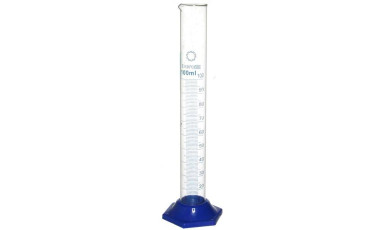Measuring cylinders
Measuring Cylinders for Daily Lab Work
When you're preparing buffer solutions at 7 AM before the rest of the team arrives, you need measuring cylinders that won't let you down. I've knocked over enough glassware to appreciate a stable base and clear graduations that don't fade after a year of constant use.
Borosilicate glass cylinders handle the temperature swings when you're measuring warm solvents straight from the water bath, while plastic basis models offer extra stability on crowded benchtops. For routine measurements where you're not chasing tenths of a milliliter, the Measured cylinder, plastic basis versions save you from the heart-stopping moment when glass meets tile floor.
Class A and Class B Tolerance Standards
Class A cylinders deliver ±0.5-2% tolerance with batch certificates—necessary when you're validating analytical methods or preparing standards for HPLC. I reserve these for quantitative work where accuracy directly affects results.
Class B cylinders with ±1-4% tolerance handle everything else: media preparation, rough dilutions, and teaching labs where students are still learning meniscus reading. They cost less and survive the daily grind of general lab work. Unlike Round funnels or Graduated cylindrical funnels that estimate volumes during transfers, cylinders give you actual measurements you can record in notebooks.
Selecting the Right Cylinder Capacity
- 10-50mL cylinders: Measuring small volumes of expensive reagents or concentrated acids where precision matters most
- 100-250mL range: The workhorses for solution preparation and sample dilution in analytical chemistry
- 500-2000mL capacities: Bulk media preparation and large-volume transfers, though Glass apparatus like volumetric flasks become more accurate at these volumes
Match cylinder capacity to your typical measurement range—measuring 15mL in a 500mL cylinder introduces unnecessary error. When setting up complex extractions alongside Soxlet extraction apparatus, having multiple cylinder sizes prevents constant washing between measurements.
Reading Meniscus Levels Correctly
Position your eye level with the liquid surface—reading from above or below introduces parallax error that ruins otherwise careful work. The meniscus bottom (the curved liquid surface) should align with the graduation mark.
Clear borosilicate glass makes meniscus reading straightforward, but scratched or etched surfaces from years of cleaning complicate things. Permanent markings that resist acetone and harsh detergents maintain readability through hundreds of wash cycles, unlike temporary labels that fade after a month of dishwasher abuse.
Our partners
We only work with trusted brands
Sign up to our newsletter to get the latest news and updates about our products.







